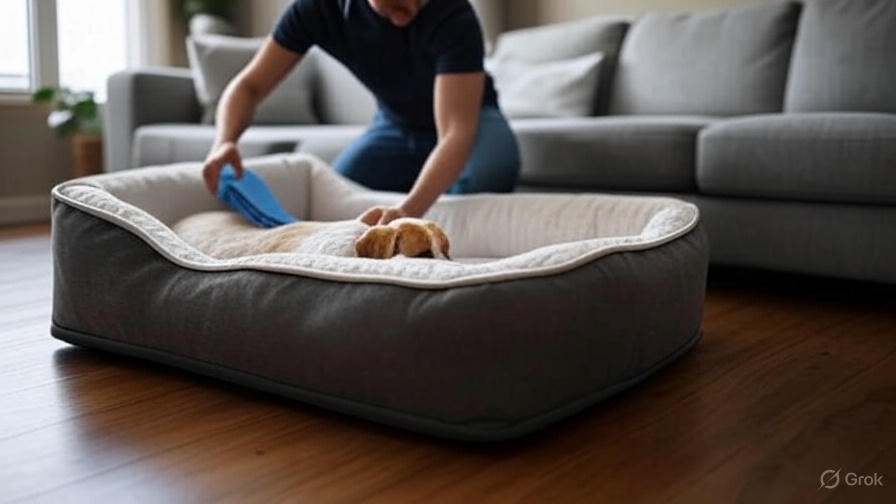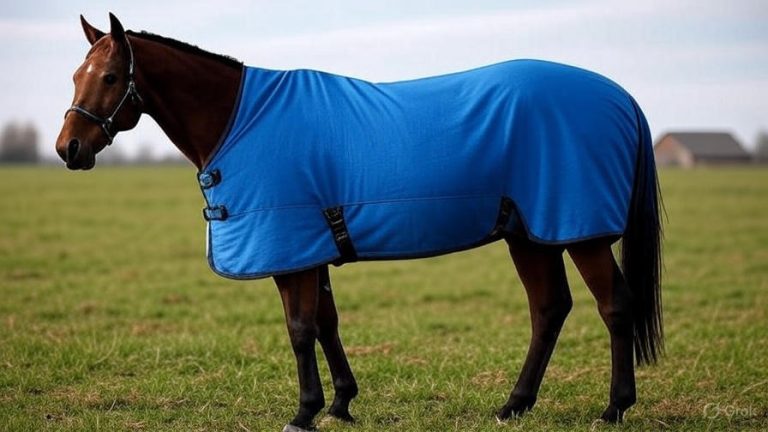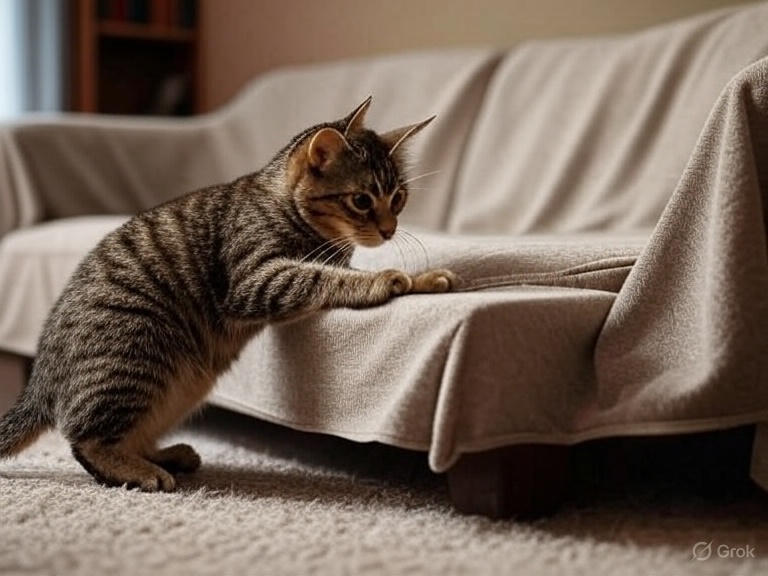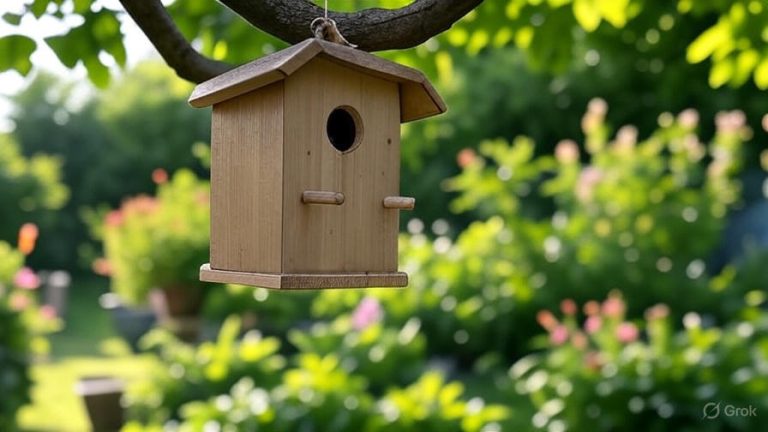How to Clean a Dog Bed?
Your furry friend spends countless hours snoozing, playing, and relaxing on their beloved bed. Just like your own bedding needs regular washing, your dog’s sleeping space requires consistent cleaning to maintain hygiene and comfort. Dog beds accumulate dirt, hair, drool, and odors faster than you might expect, making proper cleaning essential for both your pet’s health and your home’s cleanliness.
Many pet owners struggle with effective bed cleaning techniques, often wondering about the best methods, frequency, and products to use. This comprehensive guide walks you through everything you need to know about keeping your dog’s bed fresh, clean, and comfortable.
Why Regular Dog Bed Cleaning Matters
Dog beds harbor bacteria, allergens, and parasites that can affect your pet’s health. Dirty bedding creates breeding grounds for fleas, mites, and other unwanted guests that make your dog uncomfortable and potentially sick. Regular cleaning eliminates these threats while extending your bed’s lifespan.
Odor control represents another crucial reason for consistent cleaning. Dogs naturally produce oils and shed hair daily, creating smells that permeate fabric over time. Clean beds smell fresh and make your entire home more pleasant for family members and guests.
Skin conditions often worsen when dogs sleep on dirty bedding. Bacteria and allergens trapped in unwashed fabric can trigger dermatitis, hot spots, and other skin irritations. Clean sleeping surfaces support healthy skin and coat condition.
Essential Cleaning Supplies for Dog Beds
Before starting your cleaning routine, gather the necessary supplies. Having everything ready streamlines the process and ensures thorough cleaning every time.
Basic cleaning arsenal includes:
- Vacuum cleaner with upholstery attachment
- Lint roller or pet hair remover
- Enzyme-based pet stain remover
- Mild detergent (preferably unscented)
- White vinegar for odor elimination
- Baking soda for fresh scent
- Scrub brush with soft bristles
- Clean towels for drying
Optional but helpful items:
- Steam cleaner for deep sanitization
- Fabric freshener spray
- Rubber gloves for protection
- Old toothbrush for detail work
Enzyme cleaners work particularly well for pet bedding because they break down organic compounds that cause persistent odors. These specialized products target proteins in urine, saliva, and other biological materials that regular detergents cannot fully eliminate.
Step-by-Step Cleaning Process for Removable Covers
Most modern dog beds feature removable, washable covers that simplify the cleaning process significantly. These covers protect the inner cushion while allowing regular washing without damaging the entire bed.
Pre-cleaning preparation: Start by removing your dog’s toys, blankets, and any other items from the bed area. Shake the bed cover vigorously outdoors to remove loose hair, dirt, and debris. This preliminary step prevents your washing machine from clogging with excessive pet hair.
Hair removal techniques: Use a lint roller to collect stubborn pet hair from the fabric surface. Roll in different directions to catch hair trapped in fabric fibers. Alternatively, put on rubber gloves and run your hands over the fabric – the rubber creates static that attracts and collects hair effectively.
Spot treatment for stains: Spray enzyme cleaner directly onto visible stains, allowing it to penetrate for 10-15 minutes before washing. Work the product into stains using a soft brush, being careful not to damage delicate fabrics. This pre-treatment ensures complete stain removal during the wash cycle.
Machine washing guidelines: Wash removable covers in warm water using mild, pet-safe detergent. Add one cup of white vinegar to the rinse cycle for natural deodorizing and fabric softening. Avoid bleach or harsh chemicals that might irritate your dog’s sensitive skin.
Run an extra rinse cycle to eliminate all detergent residue, which can cause skin irritation or allergic reactions. Use the gentle cycle for delicate fabrics or the normal cycle for sturdy materials like canvas or denim.
Proper drying methods: Air drying preserves fabric integrity and prevents shrinkage better than machine drying. Hang covers on a clothesline or lay flat on clean towels in a well-ventilated area. If using a dryer, select low heat settings and remove covers while slightly damp to prevent over-drying.
Cleaning Non-Removable Dog Beds
Beds without removable covers require different cleaning approaches but can still achieve excellent results with proper techniques and patience.
Surface cleaning routine: Vacuum the entire bed surface using an upholstery attachment, paying special attention to crevices where hair and dirt accumulate. Use slow, overlapping strokes to ensure thorough debris removal. Empty the vacuum bag or canister immediately after use to prevent odors from spreading.
Spot cleaning technique: Mix a solution of mild detergent and warm water in a spray bottle. Lightly mist stained areas without oversaturating the foam interior. Use a clean cloth to blot stains, working from the outside toward the center to prevent spreading.
Apply enzyme cleaner to biological stains like urine or vomit. Allow the product to work for the recommended time before blotting with clean towels. Repeat the process if stains persist, but avoid excessive moisture that can damage foam filling.
Deep cleaning method: For heavily soiled beds, create a cleaning solution using warm water, mild detergent, and white vinegar in equal parts. Use a soft-bristled brush to work the solution into the fabric gently. Focus on high-traffic areas where your dog’s head and body typically rest.
Rinse by blotting with clean, damp towels to remove soap residue. This step requires patience but prevents detergent buildup that can irritate your pet’s skin. Work systematically across the entire surface to ensure complete cleaning.
Accelerated drying tips: Position the bed near a fan or open window to promote air circulation and faster drying. Rotate the bed every few hours to ensure even drying on all sides. Sprinkle baking soda on damp surfaces to absorb moisture and neutralize odors while the bed dries.
Natural Cleaning Solutions for Sensitive Dogs
Some dogs have allergies or sensitivities that make commercial cleaning products unsuitable. Natural alternatives provide effective cleaning while protecting your pet’s health and comfort.
Baking soda treatment: Sprinkle baking soda liberally over the entire bed surface and let it sit for several hours or overnight. The powder absorbs odors, moisture, and oils naturally. Vacuum thoroughly to remove all residue before allowing your dog back on the bed.
This method works particularly well for routine maintenance between deep cleanings. Use it weekly to keep beds fresh and odor-free without harsh chemicals or fragrances that might bother sensitive pets.
Vinegar solution benefits: Create a natural cleaning spray using equal parts white vinegar and water. This solution eliminates bacteria and odors while being completely safe for pets. Spray lightly and allow the bed to air dry completely – the vinegar smell dissipates quickly, leaving behind a fresh, clean surface.
Essential oil considerations: While some essential oils offer antibacterial properties, many are toxic to dogs. Stick to pet-safe options like lavender in extremely diluted concentrations, or avoid oils altogether when cleaning pet bedding. Your dog’s safety outweighs any potential aromatherapy benefits.
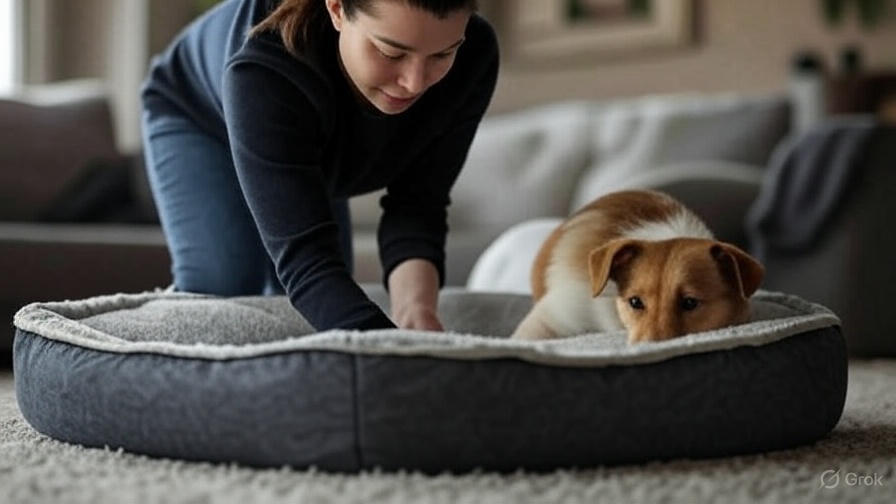
Handling Specific Stains and Odors
Different types of stains require targeted approaches for complete removal. Identifying the stain type helps you choose the most effective cleaning method.
Urine stain removal: Urine creates both visible stains and persistent odors that regular detergent cannot fully eliminate. Blot fresh accidents immediately with paper towels to absorb as much liquid as possible. Avoid rubbing, which pushes urine deeper into fabric fibers.
Apply enzyme cleaner generously to affected areas, ensuring it penetrates completely through to the foam layer. Allow the product to work according to package directions – rushing this step reduces effectiveness significantly. Blot with clean towels and repeat if necessary.
Mud and dirt cleanup: Allow mud to dry completely before attempting removal. Once dry, brush or vacuum loose dirt particles from the surface. Create a cleaning solution using warm water and mild detergent, then gently work it into remaining stains with a soft brush.
Rinse thoroughly with clean water and blot dry with towels. This method prevents mud from spreading and makes removal much easier than trying to clean wet mud stains.
Vomit and organic matter: Remove solid matter immediately using disposable gloves and paper towels. Avoid pushing material deeper into fabric fibers by scraping gently from the outside of the stain toward the center.
Apply enzyme cleaner to break down proteins and eliminate odors completely. These biological stains require protein-dissolving enzymes that regular detergents don’t provide. Allow extra time for the cleaner to work on these challenging stains.
Cleaning Schedule and Maintenance Tips
Establishing a regular cleaning routine prevents heavy soil buildup and extends your dog bed’s lifespan significantly. Consistent maintenance requires less effort than deep cleaning severely soiled beds.
Weekly maintenance routine: Vacuum the bed surface weekly to remove hair, dirt, and debris before they embed deeply in fabric. Use the lint roller on high-traffic areas where your dog’s body makes the most contact. Spot clean any visible stains immediately rather than letting them set.
Shake out removable covers outdoors to release trapped particles and freshen the fabric. This simple step removes a surprising amount of debris and keeps beds looking and smelling better between washes.
Monthly deep cleaning: Wash removable covers monthly or more frequently if your dog spends significant time outdoors or has accidents. Non-removable beds benefit from monthly deep cleaning using the methods described earlier in this guide.
Inspect beds during cleaning for signs of wear, damage, or excessive odor retention that might indicate replacement time. Early detection of problems prevents complete bed failure and keeps your pet comfortable.
Seasonal considerations: Spring and fall shedding seasons require more frequent cleaning as dogs lose their winter or summer coats. Increase your cleaning frequency during these periods to manage the extra hair and maintain bed hygiene.
Summer months might require additional cleaning due to increased outdoor activity and potential swimming or bathing that can transfer moisture to beds. Winter heating can create static that attracts more hair and debris to fabric surfaces.
Choosing the Right Cleaning Products
The market offers numerous cleaning products designed specifically for pet bedding, but not all products deliver the same results or safety levels for your dog.
Reading product labels: Look for cleaners labeled as pet-safe or non-toxic. Avoid products containing ammonia, bleach, or strong fragrances that can irritate your dog’s respiratory system or skin. Enzyme-based cleaners consistently perform better than traditional detergents for pet-specific stains and odors.
Homemade vs. commercial solutions: Homemade cleaning solutions using common household items often work as effectively as commercial products while costing significantly less. They also give you complete control over ingredients, ensuring your dog’s safety and comfort.
Commercial products offer convenience and specialized formulations for tough stains, but always test new products on a small, inconspicuous area before treating the entire bed. This precaution prevents damage to expensive bedding.
Signs Your Dog Bed Needs Replacement
Even with excellent care and regular cleaning, dog beds eventually wear out and need replacement. Recognizing these signs helps you maintain your pet’s comfort and hygiene.
Structural integrity issues: Lumpy, flattened, or permanently compressed filling no longer provides adequate support for your dog’s joints and muscles. Senior dogs particularly benefit from supportive bedding that maintains its shape over time.
Torn or frayed fabric creates comfortable hiding places for bacteria, parasites, and allergens that resist cleaning efforts. Once fabric integrity fails, thorough cleaning becomes impossible regardless of your efforts.
Persistent odor problems: If odors return quickly after thorough cleaning, the bed has likely absorbed too much organic matter to clean effectively. This situation typically occurs with beds that haven’t received regular maintenance or have experienced multiple serious accidents.
Hygiene and health concerns: Beds showing visible mold, mildew, or permanent staining pose health risks to your pet. These conditions indicate moisture problems or inadequate cleaning that creates unsafe sleeping conditions.
Creating a Clean Sleeping Environment
Clean beds work best within an overall clean environment that supports your dog’s health and comfort. Consider the surrounding area when maintaining your pet’s sleeping space.
Location considerations: Place dog beds in areas with good air circulation to prevent moisture buildup that encourages bacteria and mold growth. Avoid damp basements or areas near water sources unless you can ensure adequate ventilation and humidity control.
Keep beds away from high-traffic areas where they collect more dirt and debris from foot traffic. Quiet corners or dedicated pet spaces often stay cleaner longer while providing your dog with peaceful sleeping areas.
Multiple bed strategy: Many pet owners find that having two beds allows for rotation during cleaning cycles. While one bed dries or receives deep cleaning, your dog still has a comfortable sleeping surface available.
This approach also lets you match bed types to different activities or seasons. Waterproof outdoor beds for summer use and cozy indoor beds for winter sleeping provide optimal comfort year-round.
Final Thoughts on Dog Bed Hygiene
Maintaining clean dog bedding requires consistent effort but provides significant benefits for both you and your pet. Clean beds promote better health, reduce household odors, and create more comfortable living spaces for everyone.
Start with simple weekly maintenance routines and build up to more comprehensive cleaning schedules as needed. Pay attention to your dog’s specific needs, activity level, and any health conditions that might require more frequent cleaning.
Remember that investing time in proper bed maintenance saves money in the long run by extending bed lifespan and preventing health issues related to poor hygiene. Your dog will appreciate the fresh, comfortable sleeping surface, and you’ll enjoy a cleaner, better-smelling home.
With these proven techniques and consistent application, you can keep your dog’s bed clean, fresh, and comfortable for years to come. Your faithful companion deserves a clean place to rest, and you deserve a home free from pet-related odors and allergens.

